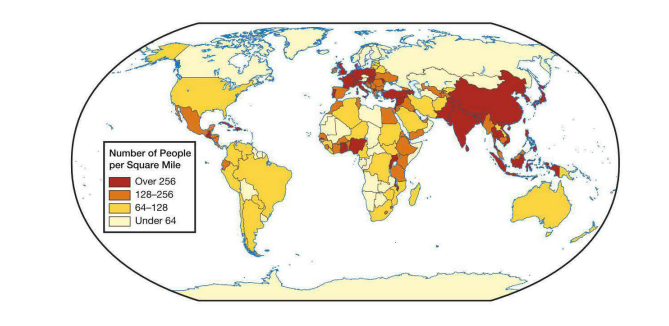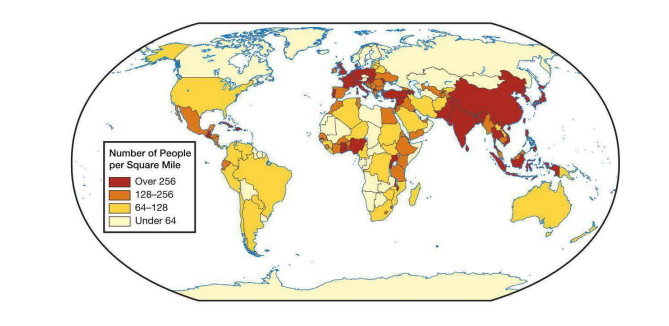AP HUG UNIT 2: Population and Migration
1/29
There's no tags or description
Looks like no tags are added yet.
Name | Mastery | Learn | Test | Matching | Spaced |
|---|
No study sessions yet.
30 Terms
Arithmetic population density
Physiological population density
Agricultural population density
Redistricting
Carrying capacity
Dependency ratio
CBR (crude birth rate)
TFR (total fertility rate)
Infant mortality rate
CDR (crude death rate)
RNI (rate of natural increase)
DTM (demographic transition model)
Epidemiological Transition Model
Malthusian Theory
Boserup Theory
Antinatalist policies
Pronatalist policies
Migration transition model
Intervening obstacles
Intervening opportunity
Gravity model of migration
Step migration
IDPs (internally displaced persons)
Chain migration
Transhumance
Refugee
Ethnic enclaves

Which generalization is best illustrated by the world map above?
The majority of the world's population lives between 20° N and 60° N latitude.

Based on the map, which area is most densely populated?
Eastern Asia

According to the table, which country has a greater need for increased crop yields and imported foods and why?
Country A: Its high arithmetic and physiological densities indicate that it needs to use a high percentage of its land to grow crops.